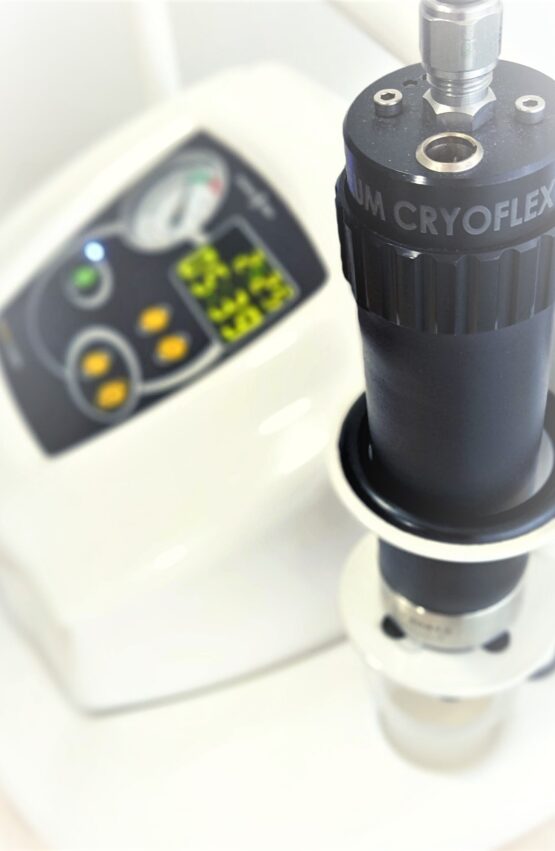The best choice for local cryostimulation for animals
Rehabilitation / Physiotherapy / Sport / Biological regeneration / Wellness
Diseases of locomotor system:
- Inflammatory diseases of locomotor system
- Arthrosis and secondary degeneration of spine and peripheral joints
Diseases of metabolic origin:
- Periarticular inflammation in ligaments and joint capsule
Some skin diseases with affected joints
- Inflammatory diseases of soft tissues: myositis, fibromyositis and collagenosis
- post-traumatic or overloading changes in joints and soft tissues
- discopathies
Biological regeneration of overloaded muscles:
- Decreases injury recovery time (up to 50%)
- Helps reduce significantly DOMS (Delayed Onset Muscle Soreness)
- Increase in muscle strength
- Inhibits inflammation and improves joint and tendons functioning
- Reduces recovery time
Professional sport:
- Adjunctive biological regeneration (biostimulating effect)
- Adjunctive endurance and strength training
- Acceleration of post-endurance restitution
- Prophylaxis of locomotor system overloading, adjunctive
- Post-traumatic treatment of soft tissues and joints (contusion, hematomas, distortion)
- Adjunctive treatment of overloading syndromes in muscles, muscle attachments, joints and spine

Cryostimulation is a short-term exposure of particular parts of the body (muscles, tendons, ligaments, joints, trigger points) to extremely low temperatures (-112°F) with exposure time from 2 to 12 minutes.
This method takes advantage of stimulus, superficial action of extremely low temperatures applied in a short time to provoke and exploit physiological reactions to cold. It evokes many beneficial physiological effects: analgesic, neuromuscular, anti-inflammatory, anti oedematous and circulatory.
The main objective of cryostimulation applied as a preparation for intensive kinesitherapy is maximum cooling of the area adjacent to the organ (e.g. whole joint along with neighbouring muscles) to the value of 35.5°F-39.°F in reference to skin surface. In such a cryostimulation tissues are cooled by carbon dioxide (CO2) vapour.
During the procedure an animal can stand. The operator is moving the treatment handpiece 1.2 in. over the skin surface in scanning movements. Time of procedure on one body area ranges from 30 seconds to 5 minutes, while in animal with fat deposition or robust musculature (a horse case) may be extended to 10 minutes.
If few areas are cooled during one procedure, its total time should not exceed 12 minutes. Cryostimulation procedure can be performed at the same time on maximum five joints of palm, foot and spine are counted as one group of small joints.
The cycle of local cryotherapy usually consists of 10-15 procedures performed once or twice a day. The minimal break between procedures should last 4-6 hours.
The process is completely tolerable, yet the body interprets the extreme cold as a threat to its wellbeing.
The temperature cold-receptors in the skin send this information to the brain, which responds with an attempt to restore balance.
The first step the animal's body takes to protect its core temperature, is to redirect blood from superficial vessels and capillaries in the skin towards deeper structures.
This causes blood to flow from the periphery towards the central core.
The vessels and capillaries expand up to four times their normal diameter.
This causes a significant increase in blood flow to the skin and extremities, enriching cells with oxygen and enzymes to a much greater degree than under normal balanced conditions.
B-endorphins are released, which act as the body's natural morphine.
This has a pain relieving effect throughout the whole body and also creates a sense of euphoria.
The cold exposure drastically reduces the animal's body ability to communicate pain signals.
After multiple sessions, the animal's body adapts its perception to pain stimuli.
Muscle relaxation leads to relief of muscle spasm.
The animal’s body's white blood cells secrete small proteins (cytokines), which are used in cell signaling and ultimately affect the behaviour of other cells.
These proteins can be either pro-inflammatory or anti-inflammatory.
During cryostimulation, pro-inflammatory cytokines are decreased and anti-inflammatory cytokines are increased. This causes a powerful anti-inflammatory response throughout the whole body.
The animal’s body's total anti-oxidative status is increased. The body achieves an improved ability to eliminate free radicals, naturalize toxins and repair cellular damage.
As part of the animal's body's metabolic reheating mechanism, additional calories are burnt.
Reports suggest that multiple cryostimulation sessions lead to a longer term increase in metabolism, which can lead to weight loss.
Dave the kangaroo is suffering joint pain because of his arthritis, but Collection Manager Kathleen has the idea to try cryotherapy to see if they can achieve positive results, even though some people are sceptical about its effectiveness.
Source: YouTube, Animal Planet